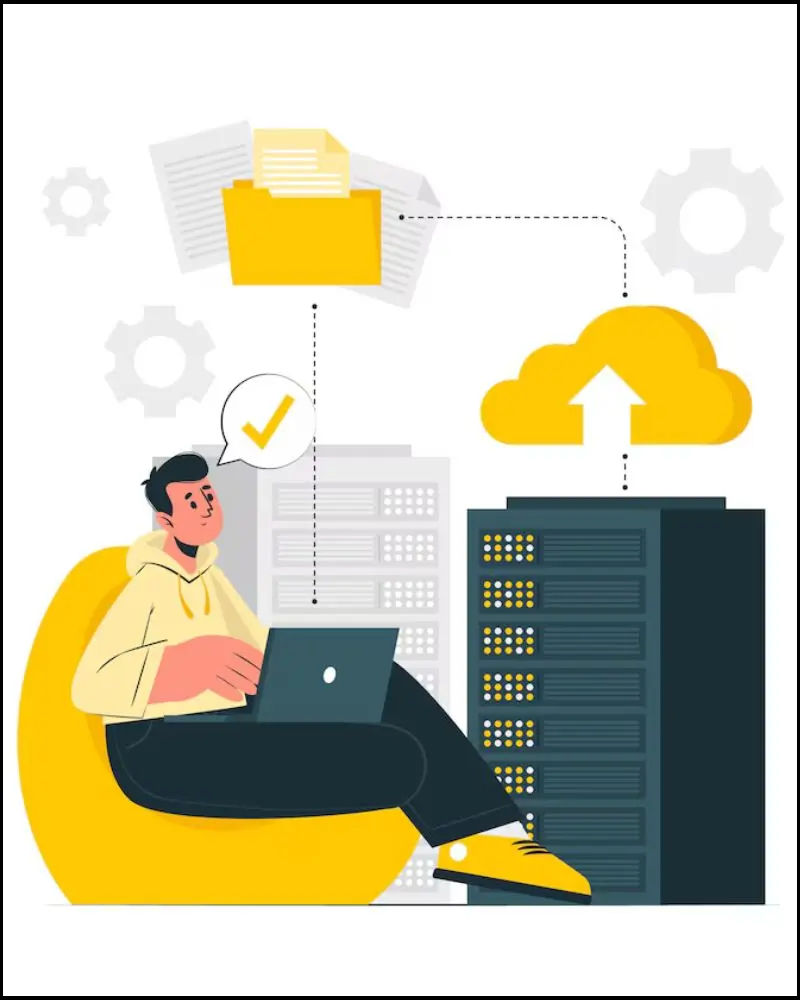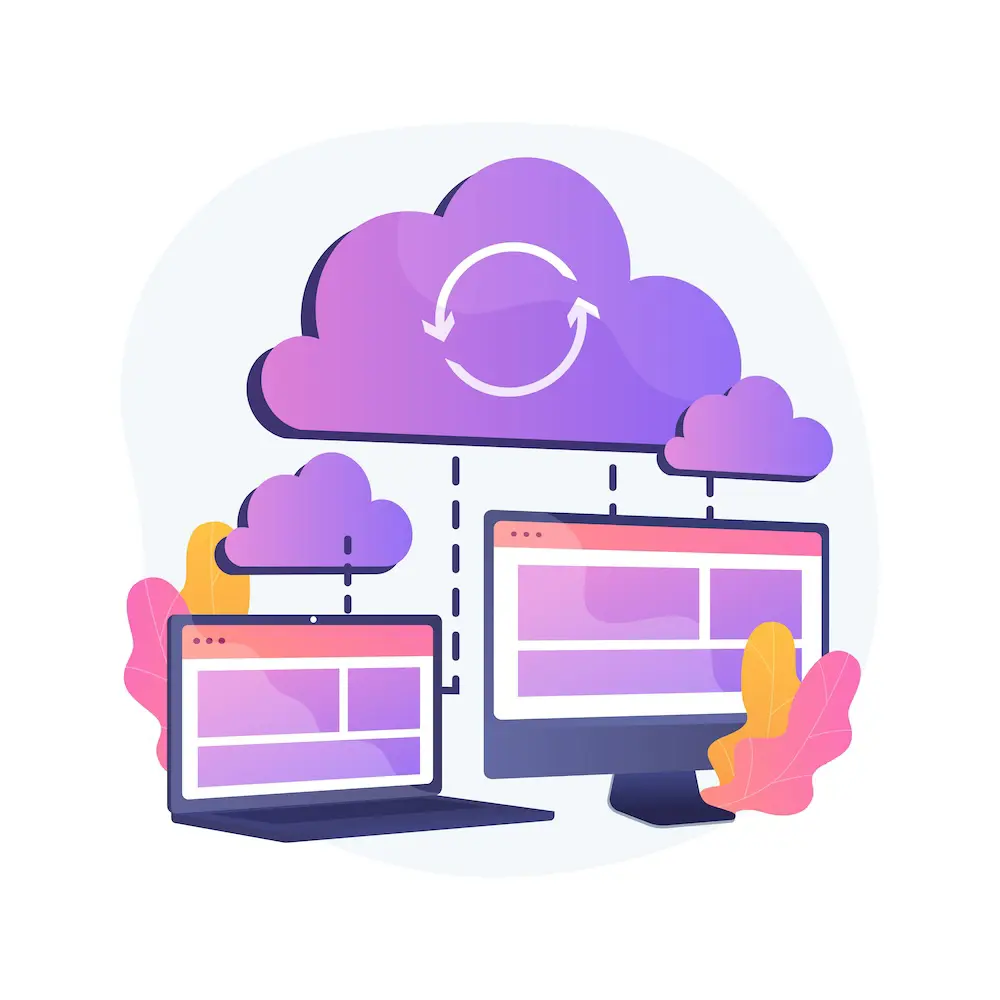In today's context, the digital arena has taken over the business seeking agility, scalability, and cost-effectiveness by storm. Be it computing systems or data related queries, there are thousands of applications that might be your guide.
Focusing more on data and its migration process, today we are going to explore the pros, cons, and every detail related to cloud and data migration systems.
Therefore, we have prepared a guide to make your task more accessible and to help you learn the functionalities and intricacies of data migration systems.
What Is Data Migration?
Data migration is a common IT process that selects, prepares, and permanently transfers data from one computer storage system to another. It is like shifting an apartment, but instead of furniture and your personal items, here, we are transferring files from one device to another.
Types of Data Migration
There are six different types of data migration, and they are as follows-
1. Application migration is a process of shifting data when an organization or business changes its software application vendor.
2. Storage migration is an upgrading process of data from one physical medium to another.
3. Business process migration transfers business applications, processes, and metrics.
4. Data center migration moves existing infrastructure to a new physical location or into a new infrastructure.
5. Cloud migration shifts applications and data from the source to the cloud or from one cloud storage to another.
6. Database migration has two types: simple and complex. Simple migration involves moving data from one version of a database management system (DBMS) to a new version. However, the complex version involves moving data where the source and target DBMS have different data structures, which is known as schema.
What is Data Migration Software?
Data migration software is a tool that facilitates secure and efficient data transfer from one device to another. It offers a variety of functionality which includes-
- Identifying and categorizing data that needs to be migrated.
- Filter and transform the data to ensure compatibility with a targeted cloud environment.
- Automate repetitive tasks and schedule the migration process.
- Ensure that the data is protected.
- Verify data accuracy and confirm successful migration and data integrity.
Cloud Migration Basics
Cloud migration emphasizes WHERE to transfer the data rather than focusing on HOW. In short, this is a process of transferring apps, IT resources, and data from on-premises servers to cloud services such as Amazon Web Services (AWS), Microsoft Azure, or Google Cloud Platform (GCP).
Understanding Cloud Migration Software
Cloud migration software is your guide and also the medium for transferring your details to the cloud. It simplifies the process and ensures that your IT operations are safely transferred to the cloud system. This software typically offers enhanced scalability, as it can be scaled up or down according to your resources.
This eliminates the need to purchase expensive hardware upgrades, which will also save you some bucks. It increases reliability and has inbuilt disaster recovery solutions that ensure continuity in case of outages. Additionally, cloud migration provides a potentially more secure environment than on-premises infrastructure.
Cloud migration systems also help reduce costs by eliminating upfront infrastructure investments and ongoing maintenance expenses by offering a pay-as-you-go model.
Advantages of Data and Cloud Migration Software Solutions
There are several benefits of cloud and data migration software solutions, including-
1. Migration software opts for a more structured approach and simplifies migration by automating repetitive tasks.
2. It reduces downtime by scheduling migrations outside peak business hours.
3. Data migration software improves security and makes sure that it complies with data privacy regulations.
4. In comparison to manual methods, migration software opts for automation, which makes the process efficient and may lead to saving some coins.
5. Cloud-based tools can be easily scaled up or down as data volumes or migration needs fluctuate, enhancing scalability.
6. It also minimizes downtime, avoiding business disruptions.
7. With their encryption capabilities, this migration system also safeguards sensitive data during transfer.
Data Migration Software vs. Cloud Migration Software
As both are migration software, there might be some overlaps in the services they offer. However, some keyfactors that differentiates them are mentioned in the following table.
| Data Migration Software | Cloud Migration Software |
| Primary focus is security & efficiency of the transfer | It focuses on broader functionalities such as data migration, application migration, and infrastructure orchestration |
| It's agnostic that supports various cloud platforms | It can be both agnostic and specific software that is designed for migrating data from a particular cloud provider |
| It focuses on data handling features like discovery, filtration, & validation | It may include data handling features but might be less comprehensive |
| Application migration is typically not included | It often includes application migration, especially in cloud-specific tools |
| Infrastructure orchestration is not included | Infrastructure orchestration may be included in specific ones |
| For example- Informatica PowerCenter | For example- AWS CloudEndure Migration Accelerator |
Data and Cloud Migration Software Solutions
While data and cloud software solutions both help move data, they cater to different needs and offer various functionalities.
Cloud Migration Software Solutions
Cloud migration software solutions make shifting IT infrastructure, such as data and apps, to the cloud easy. This software aims to cover more ground and concentrates on cloud-specific capabilities and data migration functionalities.
It contains instruments that evaluate cloud readiness and the state of the IT infrastructure, as well as organize and carry out the migration. Furthermore, it provides tools for ongoing data migration and application optimization within the cloud system.
Data Migration Software Solutions
In comparison to cloud migration software solutions, data migration software solutions focus on moving data between different environments. Also, it has a narrow scope as it works on data extraction, transformation, and loading,
It may include basic data assessment and has limited data migration planning and execution. However, if you look at the bright side, it includes additional features like data synchronization and backup solutions and offers essential data monitoring after migration.
Choosing the Right Data and Cloud Migration Software
Choosing the right software totally depends on your specific migration requirements. It may either make your process easier or simply make your task more difficult. First, you have to understand the volume, type, and complexity of your data and assess it to determine the software's capabilities and capacity.
Then, choose the one with robust encryption that ensures data security during and after migration. Next, determine if you genuinely need migration software that supports multiple platforms or if you need the one with a specific cloud provider.
Also, evaluate the software's user interface and make sure it aligns with your team's technical expertise. Lastly, seek vendors that provide free trials to test functionality and consider the level of support available if needed.
Content Source:










